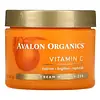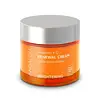What's inside
What's inside
 Key Ingredients
Key Ingredients

 Benefits
Benefits

 Concerns
Concerns

 Ingredients Side-by-side
Ingredients Side-by-side

Aloe Barbadensis Leaf Juice
Skin ConditioningGlycerin
HumectantCoconut Alkanes
EmollientDiheptyl Succinate
EmollientCetearyl Olivate
Sorbitan Olivate
EmulsifyingCapryloyl Glycerin/Sebacic Acid Copolymer
Skin ConditioningXanthan Gum
EmulsifyingAscorbyl Glucoside
AntioxidantCitrus Aurantifolia Oil
CleansingCitrus Aurantium Bergamia Fruit Oil
MaskingCitrus Aurantium Dulcis Peel Oil
MaskingCitrus Nobilis Peel Oil
MaskingCitrus Paradisi Peel Oil
MaskingCurcuma Longa Root Extract
MaskingGlycyrrhiza Glabra Root Extract
BleachingSilybum Marianum Extract
Skin ConditioningTerminalia Ferdinandiana Fruit Extract
AntioxidantAscorbic Acid
AntioxidantTetrahexyldecyl Ascorbate
AntioxidantTocopherol
AntioxidantAlgin
MaskingBeta-Glucan
Skin ConditioningCalcium Ascorbate
AntioxidantCoco-Caprylate/Caprate
EmollientSqualane
EmollientBenzoic Acid
MaskingPotassium Sorbate
PreservativeSodium Benzoate
MaskingSorbic Acid
PreservativeLimonene
PerfumingLinalool
PerfumingAloe Barbadensis Leaf Juice, Glycerin, Coconut Alkanes, Diheptyl Succinate, Cetearyl Olivate, Sorbitan Olivate, Capryloyl Glycerin/Sebacic Acid Copolymer, Xanthan Gum, Ascorbyl Glucoside, Citrus Aurantifolia Oil, Citrus Aurantium Bergamia Fruit Oil, Citrus Aurantium Dulcis Peel Oil, Citrus Nobilis Peel Oil, Citrus Paradisi Peel Oil, Curcuma Longa Root Extract, Glycyrrhiza Glabra Root Extract, Silybum Marianum Extract, Terminalia Ferdinandiana Fruit Extract, Ascorbic Acid, Tetrahexyldecyl Ascorbate, Tocopherol, Algin, Beta-Glucan, Calcium Ascorbate, Coco-Caprylate/Caprate, Squalane, Benzoic Acid, Potassium Sorbate, Sodium Benzoate, Sorbic Acid, Limonene, Linalool
Aloe Barbadensis Leaf Juice
Skin ConditioningWater
Skin ConditioningDicaprylyl Carbonate
EmollientGlycerin
HumectantCetyl Alcohol
EmollientGlyceryl Stearate Citrate
EmollientTocopherol
AntioxidantStearic Acid
CleansingMyristyl Myristate
EmollientTapioca Starch
Malus Domestica Fruit Cell Culture Extract
Skin ConditioningButyrospermum Parkii Butter
Skin ConditioningSimmondsia Chinensis Seed Oil
EmollientMagnesium Ascorbyl Phosphate
AntioxidantHydrolyzed Myrtus Communis Leaf Extract
Skin ProtectingLycium Barbarum Fruit Extract
AstringentBacillus
Skin ConditioningHelianthus Annuus Seed Oil
EmollientSqualane
EmollientAllantoin
Skin ConditioningPanthenol
Skin ConditioningCalendula Officinalis Flower Extract
MaskingRosa Canina Fruit Oil
EmollientCamellia Sinensis Leaf Extract
AntimicrobialPhenethyl Alcohol
MaskingEthylhexylglycerin
Skin ConditioningCitrus Tangerina Peel Oil
MaskingCitrus Aurantium Dulcis Peel Oil
MaskingAloe Barbadensis Leaf Juice, Water, Dicaprylyl Carbonate, Glycerin, Cetyl Alcohol, Glyceryl Stearate Citrate, Tocopherol, Stearic Acid, Myristyl Myristate, Tapioca Starch, Malus Domestica Fruit Cell Culture Extract, Butyrospermum Parkii Butter, Simmondsia Chinensis Seed Oil, Magnesium Ascorbyl Phosphate, Hydrolyzed Myrtus Communis Leaf Extract, Lycium Barbarum Fruit Extract, Bacillus, Helianthus Annuus Seed Oil, Squalane, Allantoin, Panthenol, Calendula Officinalis Flower Extract, Rosa Canina Fruit Oil, Camellia Sinensis Leaf Extract, Phenethyl Alcohol, Ethylhexylglycerin, Citrus Tangerina Peel Oil, Citrus Aurantium Dulcis Peel Oil
Ingredients Explained
These ingredients are found in both products.
Ingredients higher up in an ingredient list are typically present in a larger amount.
Aloe Barbadensis Leaf Juice comes from leaves of the aloe plant. Aloe Barbadensis Leaf Juice is best known for helping to soothe sunburns. It is also anti-inflammatory, moisturizing, antiseptic, and can help heal wounds.
Aloe is packed with good stuff including Vitamins A, C, and E. These vitamins are antioxidants, which help fight free-radicals and the damage they may cause. Free-radicals are molecules that may damage your skin cells, such as pollution.
Aloe Barbadensis Leaf Juice also contains sugars. These sugars come in the form of monosaccharides and polysaccharides, folic acid, and choline. These sugars are able to help bind moisture to skin.
It also contains minerals such as calcium, 12 anthraquinones, fatty acids, amino acids, and Vitamin B12.
Learn more about Aloe Barbadensis Leaf JuiceCitrus Aurantium Dulcis Peel Oil is oil from the peel of an orange fruit.
Limonene and linalool make up the majority of oils from citrus peels. Limonene has a "citrus" fragrance. Citrus peels also contain flavonoids, which have anti-inflammatory properties.
Citrus peel is also a rich source of flavonoids. Flavonoids are natural antioxidants and help protect your skin against damage. Flavonoids are a group of compounds naturally found in vegetables and fruits.
The term 'fragrance' is not regulated in many countries. In many cases, it is up to the brand to define this term. For instance, many brands choose to label themselves as "fragrance-free" because they are not using synthetic fragrances. However, their products may still contain ingredients such as essential oils that are considered a fragrance.
Learn more about Citrus Aurantium Dulcis Peel OilGlycerin is already naturally found in your skin. It helps moisturize and protect your skin.
A study from 2016 found glycerin to be more effective as a humectant than AHAs and hyaluronic acid.
As a humectant, it helps the skin stay hydrated by pulling moisture to your skin. The low molecular weight of glycerin allows it to pull moisture into the deeper layers of your skin.
Hydrated skin improves your skin barrier; Your skin barrier helps protect against irritants and bacteria.
Glycerin has also been found to have antimicrobial and antiviral properties. Due to these properties, glycerin is often used in wound and burn treatments.
In cosmetics, glycerin is usually derived from plants such as soybean or palm. However, it can also be sourced from animals, such as tallow or animal fat.
This ingredient is organic, colorless, odorless, and non-toxic.
Glycerin is the name for this ingredient in American English. British English uses Glycerol/Glycerine.
Learn more about GlycerinSqualane is an emollient that helps the skin hold onto moisture. It's an oily liquid that occurs naturally in certain types of fish and plant oils.
Because squalane boosts hydration in the skin, it also comes with plenty of benefits: it is an antioxidant and can help fight free radicals and skin damage. Squalane is also found to have a detoxifying effect when applied.
Squalane comes from squalene, which occurs naturally within the sebum of our skin. It is one of the oils our skin produces to keep itself hydrated. Squalane is the hydrogenated version of squalene and has a longer shelf life.
Research shows that squalane is non-irritating (even at 100% concentration).
In general, it's a fantastic ingredient. It does a great job at hydrating the skin, and it's suitable for those with sensitive skin.
The source of squalane may impact malassezia / fungal acne. This is because olive oil derived squalane can contain impurities such as fatty acids and plant waxes. Sugarcane derived squalane is recommended for anyone with malassezia concerns.
Is squalane vegan?
This depends on the source. Squalane can be derived from both plants and animals. Most squalane used in skincare comes from plants.
Please note: the source of squalane is only known if disclosed by the brand. We recommend reaching out to the brand if you have any questions about their squalane.
Read more about squalene with an "e".
Is squalane an oil?
Squalane is often called an oil, but it’s technically not; it’s a hydrocarbon, meaning it’s only made of carbon and hydrogen, unlike true oils which are triglycerides made of fatty acids and glycerol.
The term “oil-free” isn’t regulated, so companies can define it however they want. Some exclude all oils, while others just avoid mineral oil or comedogenic oils.
While some people avoid oils thinking they cause breakouts, the right kind of oil (or oil-like ingredient like squalane) can actually help balance and hydrate your skin. It’s worth testing out simple oils or squalane to see what works best for your skin.
Learn more about SqualaneTocopherol (also known as Vitamin E) is a common antioxidant used to help protect the skin from free-radicals and strengthen the skin barrier. It's also fat soluble - this means our skin is great at absorbing it.
Vitamin E also helps keep your natural skin lipids healthy. Your lipid skin barrier naturally consists of lipids, ceramides, and fatty acids. Vitamin E offers extra protection for your skin’s lipid barrier, keeping your skin healthy and nourished.
Another benefit is a bit of UV protection. Vitamin E helps reduce the damage caused by UVB rays. (It should not replace your sunscreen). Combining it with Vitamin C can decrease sunburned cells and hyperpigmentation after UV exposure.
You might have noticed Vitamin E + C often paired together. This is because it is great at stabilizing Vitamin C. Using the two together helps increase the effectiveness of both ingredients.
There are often claims that Vitamin E can reduce/prevent scarring, but these claims haven't been confirmed by scientific research.
Learn more about Tocopherol